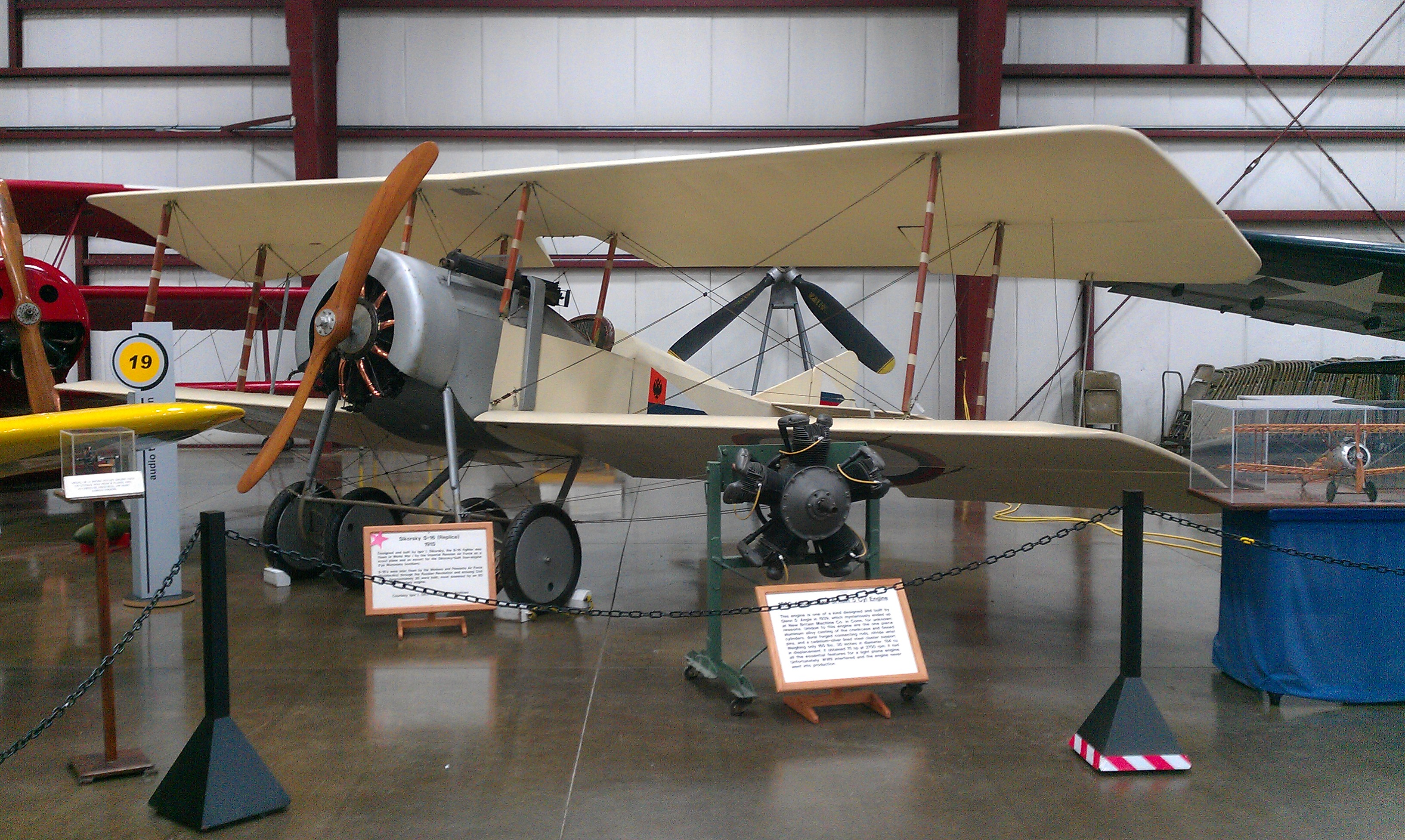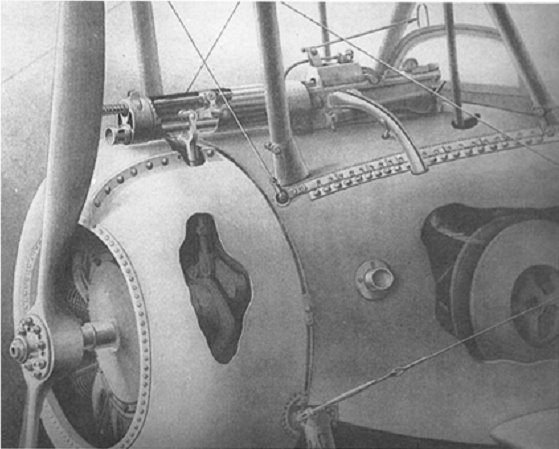|
Sikorsky S-20
The Sikorsky S-20 (named after its designer) or RBVZ S-XX (named after its manufacturer) was a Russian single-bay unequal span two-seat biplane designed by Igor Sikorsky in 1916. Displaying some Nieuport influence, it saw very little service during World War I. Five S-XX aircraft were built in September 1916, with the first two powered by the 100 hp Gnome rotary engine which had powered its predecessor, the RBVZ S-XVI. However, the other three were powered with the 120 hp Le Rhone engine, with which they were allegedly faster than the French Nieuport 17. Operational history The S-XX saw little service because it was viewed as inferior to newer enemy aircraft, and no series production was undertaken. As such, only five aircraft were ever produced. List of operators ; * Imperial Russian Air Service The Imperial Russian Air Service (russian: Императорскій военно-воздушный флотъ, , Emperor's Military Air Fleet) was an air force found ... [...More Info...] [...Related Items...] OR: [Wikipedia] [Google] [Baidu] |
Igor Sikorsky
Igor Ivanovich Sikorsky (russian: И́горь Ива́нович Сико́рский, p=ˈiɡərʲ ɪˈvanəvitʃ sʲɪˈkorskʲɪj, a=Ru-Igor Sikorsky.ogg, tr. ''Ígor' Ivánovich Sikórskiy''; May 25, 1889 – October 26, 1972)Fortier, Rénald"Igor Sikorsky: One Man, Three Careers." ''aviation.technomuses.ca,''1996. Retrieved: October 29, 2008. was a Russian–American"Britannica Concise Encyclopedia" Encyclopædia Britannica, Inc. 2006, p. 1751. [...More Info...] [...Related Items...] OR: [Wikipedia] [Google] [Baidu] |
Imperial Russian Air Service
The Imperial Russian Air Service (russian: Императорскій военно-воздушный флотъ, , Emperor's Military Air Fleet) was an air force founded in 1912 for Imperial Russia."''12 августа 1912 года приказом по военному ведомству вопросы воздухоплавания и авиации были изъяты из ведения Главного инженерного управления и переданы специально созданному органу: в воздухоплавательную часть Генерального штаба. Эта дата считается днём образования военной авиации России''"12 августа 1912 года // "Щит и меч", № 29 (1333) от 9 августа 2012 года, стр.8 The Air Service operated for five years and only saw combat in World War I before being reorganized and renamed in 1917 following the Russia ... [...More Info...] [...Related Items...] OR: [Wikipedia] [Google] [Baidu] |
Single-bay
A biplane is a fixed-wing aircraft with two main wings stacked one above the other. The first powered, controlled aeroplane to fly, the Wright Flyer, used a biplane wing arrangement, as did many aircraft in the early years of aviation. While a biplane wing structure has a structural advantage over a monoplane, it produces more drag than a monoplane wing. Improved structural techniques, better materials and higher speeds made the biplane configuration obsolete for most purposes by the late 1930s. Biplanes offer several advantages over conventional cantilever monoplane designs: they permit lighter wing structures, low wing loading and smaller span for a given wing area. However, interference between the airflow over each wing increases drag substantially, and biplanes generally need extensive bracing, which causes additional drag. Biplanes are distinguished from tandem wing arrangements, where the wings are placed forward and aft, instead of above and below. The term is also oc ... [...More Info...] [...Related Items...] OR: [Wikipedia] [Google] [Baidu] |
Nieuport
Nieuport, later Nieuport-Delage, was a French aeroplane company that primarily built racing aircraft before World War I and fighter aircraft during World War I and between the wars. History Beginnings Originally formed as Nieuport-Duplex in 1902 for the manufacture of engine components the company was reformed in 1909 as the Société Générale d'Aéro-locomotion, and its products were marketed to the aviation industry, including ignition components. During this time they built their first aircraft, a small single-seat pod and boom monoplane. This was destroyed shortly after having been flown successfully, during the Great Flood of Paris in 1909 . A second design flew before the end of 1909 and had the essential form of modern aircraft, including an enclosed fuselage with the pilot protected from the slipstream and a horizontal tail whose aerodynamic force acted downwards, balancing the weight of the engine ahead of the centre of gravity, as opposed to upwards as on contemp ... [...More Info...] [...Related Items...] OR: [Wikipedia] [Google] [Baidu] |
World War I
World War I (28 July 1914 11 November 1918), often abbreviated as WWI, was one of the deadliest global conflicts in history. Belligerents included much of Europe, the Russian Empire, the United States, and the Ottoman Empire, with fighting occurring throughout Europe, the Middle East, Africa, the Pacific, and parts of Asia. An estimated 9 million soldiers were killed in combat, plus another 23 million wounded, while 5 million civilians died as a result of military action, hunger, and disease. Millions more died in genocides within the Ottoman Empire and in the 1918 influenza pandemic, which was exacerbated by the movement of combatants during the war. Prior to 1914, the European great powers were divided between the Triple Entente (comprising France, Russia, and Britain) and the Triple Alliance (containing Germany, Austria-Hungary, and Italy). Tensions in the Balkans came to a head on 28 June 1914, following the assassination of Archduke Franz Ferdin ... [...More Info...] [...Related Items...] OR: [Wikipedia] [Google] [Baidu] |
RBVZ S-XVI
The Sikorsky S-16, or RBVZ S-XVI (named after its manufacturer), was a Russian equi-span single-bay two-seat biplane designed by Igor Sikorsky in 1914-15. Conceived in response to demand for an escort fighter for the Ilya Muromets bombers, it was noteworthy in that it was one of the first aircraft to possess synchronisation gear for its 7.7 mm machine gun. The first S-XVI was completed on 6 February 1915 with an 80 hp engine instead of the intended 100 hp because of supply problems. On 17 December 1915, the Russian government placed an order for 18 aircraft, these being delivered in early 1916. Operational history Although highly maneuverable, the S-XVI possessed a comparatively poor performance due to insufficient power. A further small batch were completed in 1917, with the aircraft being used during the Russian Revolution and staying in service until 1923. At least one aircraft have been used by the Ukrainian People's Republic after 1917. Operators *Imperia ... [...More Info...] [...Related Items...] OR: [Wikipedia] [Google] [Baidu] |
Nieuport 17
The Nieuport 17 C.1 (or Nieuport XVII C.1 in contemporary sources) was a French sesquiplane fighter designed and manufactured by the Nieuport company during World War I. An improvement over the Nieuport 11, it was a little larger than earlier Nieuports and better adapted to the more powerful engine than the interim Nieuport 16. Aside from early examples, it had the new Alkan-Hamy synchronization gear, permitting the use of a fuselage-mounted synchronised Vickers gun firing through the propeller disc. At the time of its introduction in March 1916, the type's outstanding manoeuvrability and excellent rate of climb gave it a significant advantage over fighters on both sides and was described as "the best pursuit plane of the day". It was used by many operators and entered service with every Allied power and copies were also operated by the (German Air Service). Mass-produced by several French firms, the Nieuport 17 and its derivatives were built under licence in Italy by Nieupo ... [...More Info...] [...Related Items...] OR: [Wikipedia] [Google] [Baidu] |
NACA Airfoil
The NACA airfoils are airfoil shapes for aircraft wings developed by the National Advisory Committee for Aeronautics (NACA). The shape of the NACA airfoils is described using a series of digits following the word "NACA". The parameters in the numerical code can be entered into equations to precisely generate the cross-section of the airfoil and calculate its properties. Origins NACA initially developed the numbered airfoil system which was further refined by the United States Air Force at Langley Research Center. According to the NASA website: Four-digit series The NACA four-digit wing sections define the profile by: # First digit describing maximum camber as percentage of the chord. # Second digit describing the distance of maximum camber from the airfoil leading edge in tenths of the chord. # Last two digits describing maximum thickness of the airfoil as percent of the chord. For example, the NACA 2412 airfoil has a maximum camber of 2% located 40% (0.4 chords) from the ... [...More Info...] [...Related Items...] OR: [Wikipedia] [Google] [Baidu] |
Lavrov Machine Gun
Lavrov (russian: Лавро́в), or Lavrova (feminine; Лавро́ва) is a Russian surname and may refer to: * Alexander Lavrov (1838–1904), Russian metallurgist *Andrey Lavrov (b. 1962), Soviet/Russian handball goalkeeper and the only three-times Olympic handball champion * Andrey Lavrov (statesman) (1886–1936), Soviet statesman * Georgy Lavrov (1896–1967), Soviet architect *Kirill Lavrov (1925–2007), Soviet actor and People's Artist of the USSR *Mikhail Lavrov (1799–1882), Russian rear-admiral and Arctic explorer * Nikolai Lavrov (1802–1840), Russian baritone opera-singer *Pyotr Lavrov (1823–1900), Russian theorist of narodism, philosopher, publicist, and sociologist * Pyotr Lavrov (academician) (1856–1929), Russian/Soviet philologist and academician *Sergey Lavrov (b. 1950), Foreign Minister of Russia since 2004 * Svyatoslav Lavrov (1923–2004), Soviet scientist in the field of mechanics and applied mathematics * Viktor Lavrov (1925–1943), Soviet soldier an ... [...More Info...] [...Related Items...] OR: [Wikipedia] [Google] [Baidu] |
1910s Russian Fighter Aircraft
Year 191 ( CXCI) was a common year starting on Friday (link will display the full calendar) of the Julian calendar. At the time, it was known as the Year of the Consulship of Apronianus and Bradua (or, less frequently, year 944 '' Ab urbe condita''). The denomination 191 for this year has been used since the early medieval period, when the Anno Domini calendar era became the prevalent method in Europe for naming years. Events By place Parthia * King Vologases IV of Parthia dies after a 44-year reign, and is succeeded by his son Vologases V. China * A coalition of Chinese warlords from the east of Hangu Pass launches a punitive campaign against the warlord Dong Zhuo, who seized control of the central government in 189, and held the figurehead Emperor Xian hostage. After suffering some defeats against the coalition forces, Dong Zhuo forcefully relocates the imperial capital from Luoyang to Chang'an. Before leaving, Dong Zhuo orders his troops to loot the tombs of the H ... [...More Info...] [...Related Items...] OR: [Wikipedia] [Google] [Baidu] |

.jpg)
.jpg)

